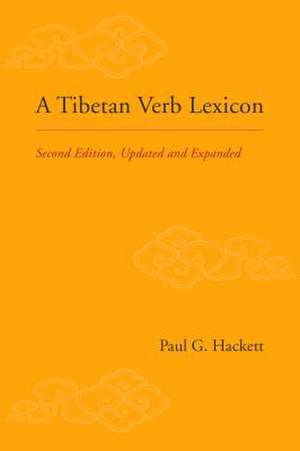A Tibetan Verb Lexicon: Second Edition, Updated and Expanded
Autor Paul G. Hacketten Limba Engleză Paperback – 29 apr 2019
Preț: 253.79 lei
Preț vechi: 306.83 lei
-17% Nou
Puncte Express: 381
Preț estimativ în valută:
48.57€ • 51.08$ • 40.58£
48.57€ • 51.08$ • 40.58£
Carte indisponibilă temporar
Doresc să fiu notificat când acest titlu va fi disponibil:
Se trimite...
Preluare comenzi: 021 569.72.76
Specificații
ISBN-13: 9781559394833
ISBN-10: 1559394838
Pagini: 520
Dimensiuni: 152 x 226 x 30 mm
Greutate: 0.7 kg
Editura: PENGUIN RANDOM HOUSE LLC
ISBN-10: 1559394838
Pagini: 520
Dimensiuni: 152 x 226 x 30 mm
Greutate: 0.7 kg
Editura: PENGUIN RANDOM HOUSE LLC
Notă biografică
Paul Hackett specializes in canonical Buddhist philosophy and Tibetan culture, as well as their influence on contemporary alternative religion in America. He is also active in the field of applied computational linguistics and serves as the chair of the Tibetan Information Technology Panel for the International Association for Tibetan Studies. He previously taught Classical Tibetan language at Columbia and Yale universities
Recenzii
"A much-needed new contribution to the general body of materials for the study of the Literary Tibetan language. Students, linguists, and translators will all find this detailed treatment of Tibetan verb usage, and particularly the lexicon itself, to be an invaluable resource for many years to come. Sophisticated work on the Tibetan language is long overdue and Hackett should be congratulated for this valuable offering."—Himalaya: The Journal of the Association of Nepal and Himalayan Studies

















